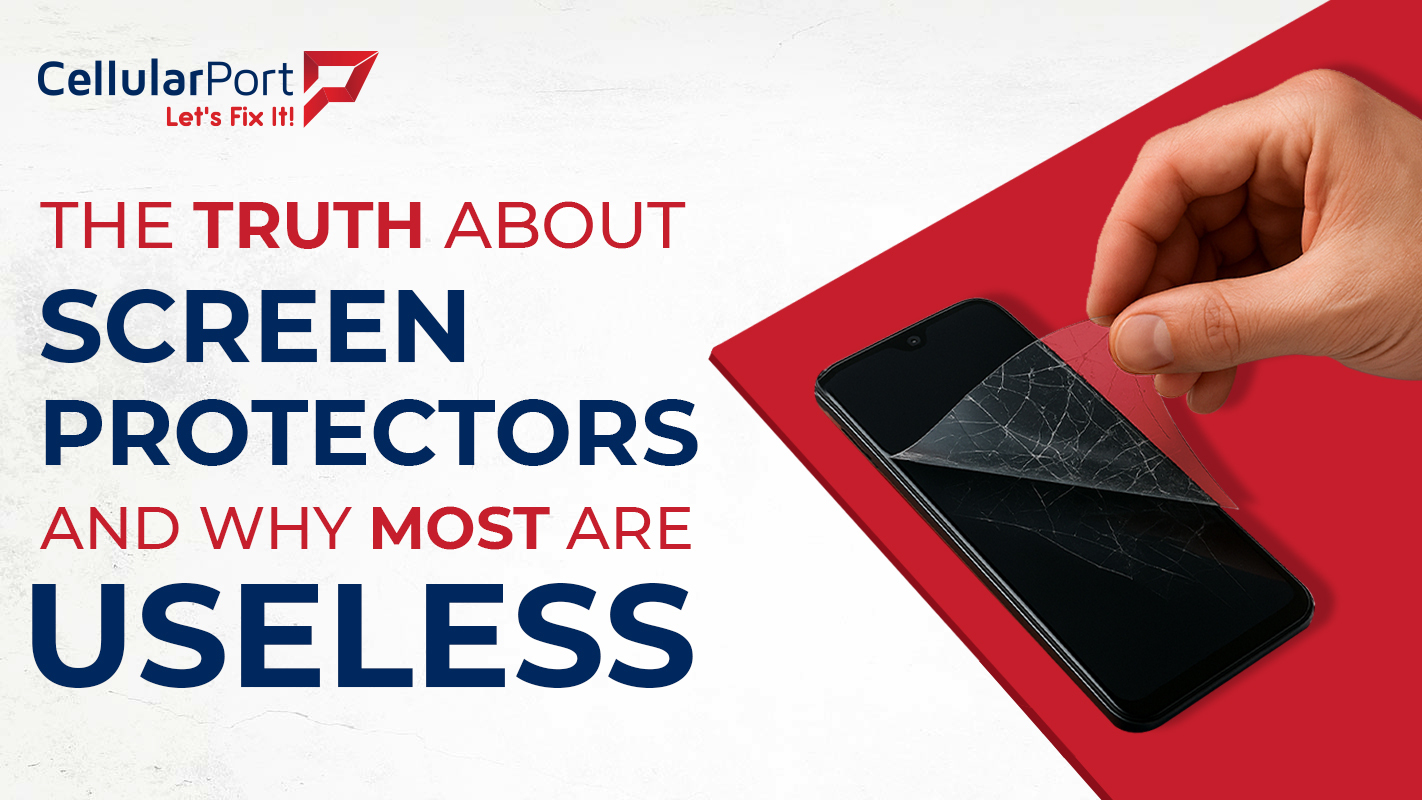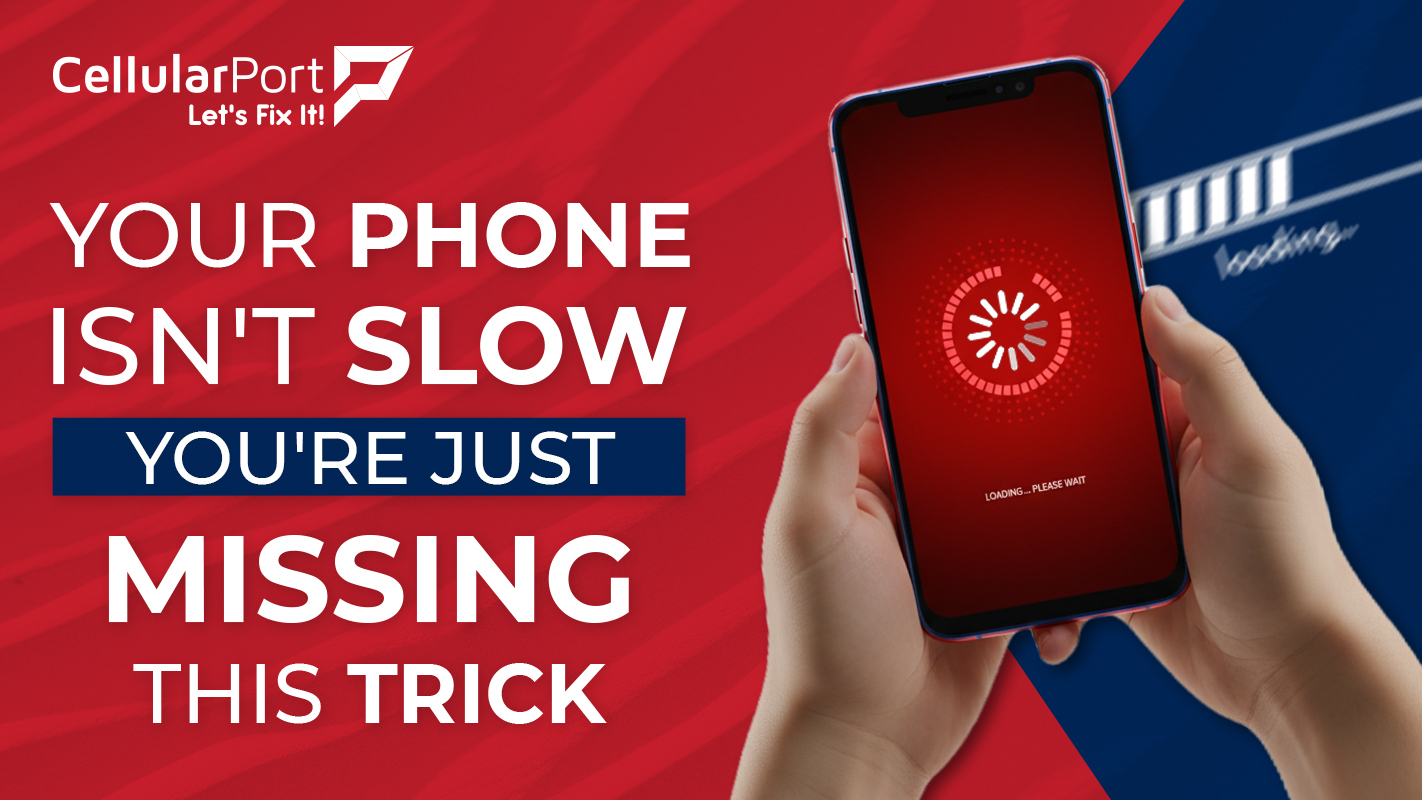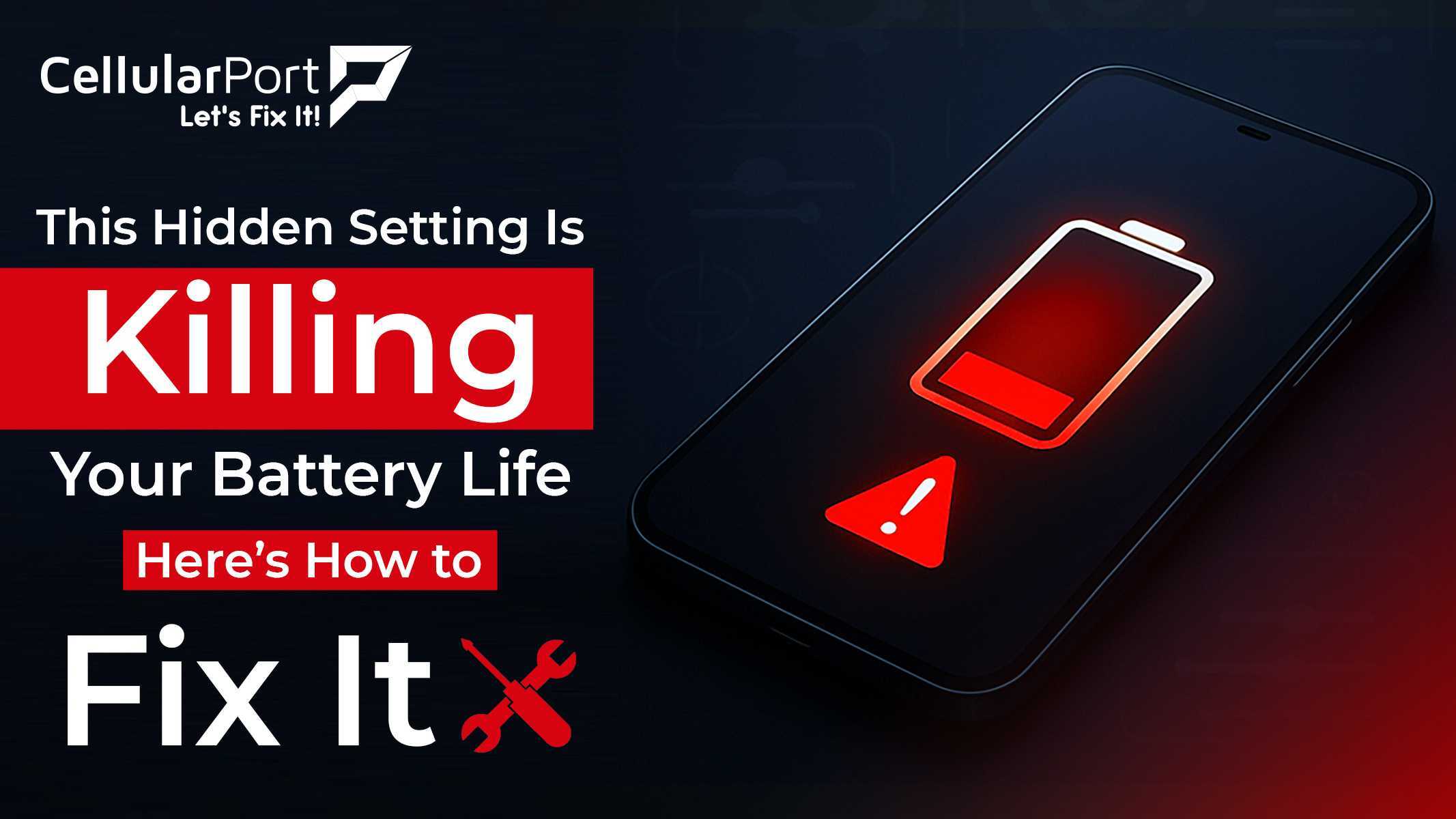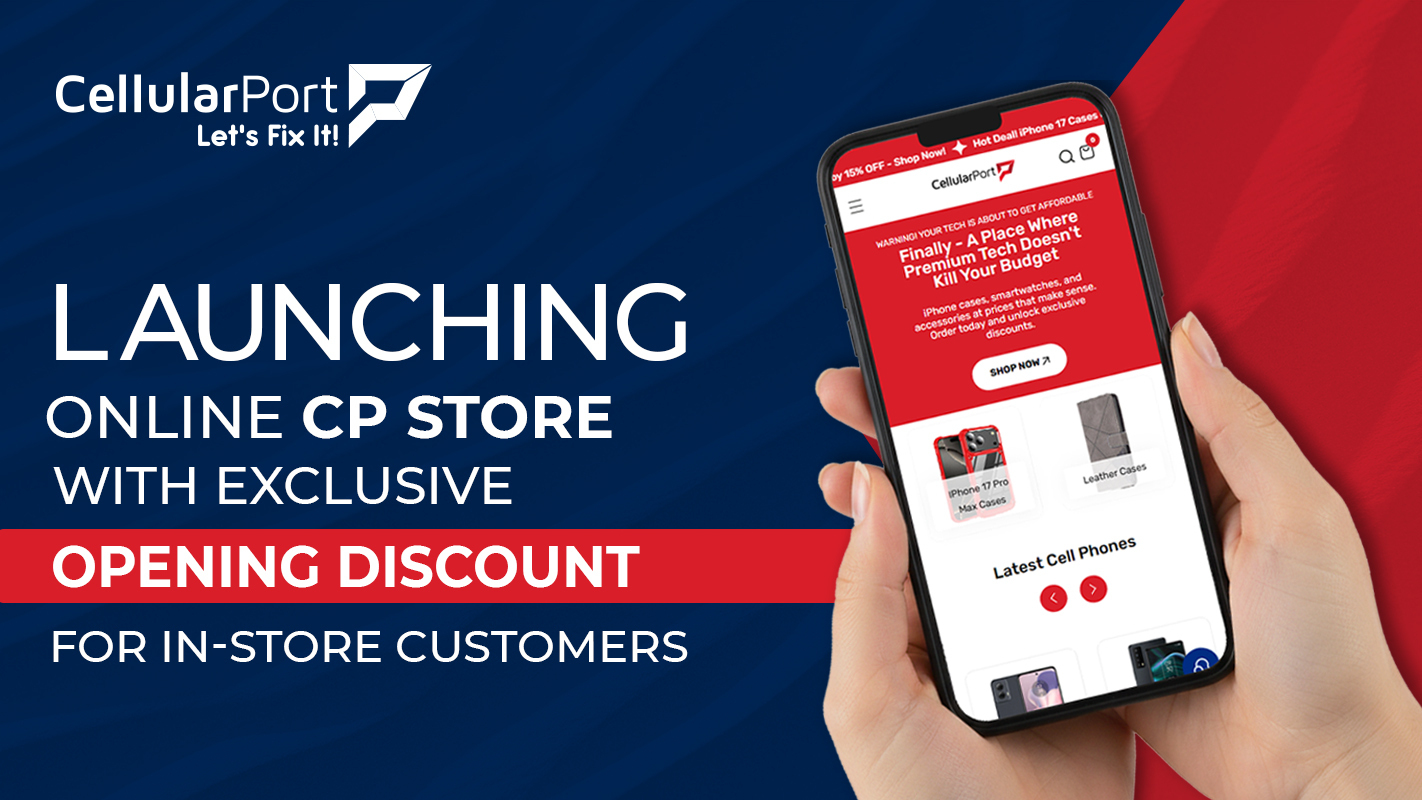Have you ever questioned yourself? With so many options in the market, which type of cell phone glass is right for my device? Take a chill pill as this blog is here to rescue you…
This guide is your one-stop solution for understanding all the different types of phone glass. Along with that, you can also explore different facts and come to a conclusion about which one fits your style and needs. Whether you’re a protection pro or a fashion fanatic, we’ve got you covered.
So, grab your phone (carefully!), ditch the worry lines, and get ready to discover the crystal-clear path to shatterproof happiness.
1) Crack-Proof Confidence: The Magic of Corning Gorilla Glass
Corning Gorilla Glass has long been the gold standard in smartphone screen protection, renowned for its exceptional durability and scratch resistance. Engineered using innovative ion-exchange technology, Gorilla Glass offers peace of mind to users, knowing that their device can withstand the rigours of daily use without succumbing to cracks or scratches.

Whether you’re prone to accidental drops or simply want to safeguard your investment, choosing a phone with Corning Gorilla Glass ensures that your screen remains crystal clear and crack-free for years to come.
What Is Gorilla Glass and How Is It Made?
For the last ten years, customers have witnessed cell phone unrest which has in a real sense impacted the world. With all that our telephones mean to us, consumers are requesting more from our cell phones than at any other time. They need gadgets that are more slender, lighter and stylishly satisfying – yet additionally more solid to more readily oppose the maltreatments that accompany versatility. Furthermore, they need scratch obstruction and high-level touch ability that keeps the world readily available.
According to Android Authority:
“Gorilla Glass is made by US company Corning, and the tech first gained prominence as the protective glass of choice for the original iPhone. It’s since been available on smartphones and tablets from a variety of manufacturers. In fact, there’s a pretty good chance the phone you’re reading this on has Gorilla Glass”.
Exploring Corning’s Innovations in Specialty Gorilla Glass
Corning has developed Corning Gorilla Glass SR+ specifically designed for wearable devices that significantly reduces visible scratches while delivering the toughness, optical clarity and touch sensitivity that make Gorilla Glass famous.
According to Triatic, Inc:
“The properties that make Gorilla Glass desirable—especially the hardness—can create problems cutting the glass down to usable sizes. Large sheets of the glass are delivered to production facilities, and it’s up to them to cut the sheets into specific dimensions for their products”.
Antimicrobial Corning Gorilla Glass
The Antimicrobial Corning Gorilla Glass is the first EPA-registered antimicrobial cover glass formulated with antimicrobial properties to protect touch surfaces and combat the thousands of bacteria that live on a mobile device surface as a result of everyday touching, tapping and swiping.
Vibrant Corning Gorilla Glass
Vibrant Corning Gorilla Glass is yet another Corning innovation. Using its proprietary process, ink and equipment, Corning prints a colorful, customized design for smartphones, tablets or notebooks on Corning Gorilla Glass.
If you’re in the market for phone cases, glasses, or similar accessories, consider exploring what CellularPort has to offer to add both style and functionality into your life.
2) Dragon at Your Service: Exploring Asahi Dragontrail Glass
Dragontrail Glass arrives in a couple of variations, with Dragontrail, Dragontrail X, and Dragontrail Master being the most unmistakable arrangements. 2016’s Dragontrail Pro delivered 30% better durability against corner drops thanks to a rounded glass edge.

Exploring the Evolution of Dragontrail Glass
If you are seeking the pinnacle of screen protection, sapphire glass stands out as the epitome of luxury and durability for you. Utilizing synthetic sapphire, a material second only to diamonds in hardness. The sapphire glass offers unparalleled scratch resistance, ensuring that your smartphone screen remains pristine even in the face of abrasive materials.
As MUO also quoted:
“Dragontrail uses the chemical float process instead of the ion exchange method used by Corning for their Gorilla Glass. The result is a six times stronger product than soda lime glass, scratch-resistant, light, and thin”.
How does it compare to Gorilla Glass?
While commonly found in high-end luxury smartphones, the exceptional durability and optical clarity of sapphire glass make it a coveted choice for discerning users who demand nothing but the best for their devices.
As Abrisa Technologies also quoted:
“Dragontrail is an excellent choice of a transparent and damage resistant window or display enhancement glass that helps to enhance the usable lifetime of high contact touch displays, field and industrial image sensors, document scanners and onboard vehicular and avionics displays”.
It’s difficult to make a comparison between Gorilla Glass and Dragontrail Glass, but Corning’s solution might be better for drops.
Discover how to get rid of cracks on your phone and while you’re at it, explore the solutions available at CellularPort!
3) Luxury in Every Scratch: The World of Sapphire Glass
If you are seeking the pinnacle of screen protection, sapphire glass stands out as the epitome of luxury and durability for you. Utilizing synthetic sapphire, a material second only to diamonds in hardness. The sapphire glass offers unparalleled scratch resistance, ensuring that your smartphone screen remains pristine even in the face of abrasive materials.

While commonly found in high-end luxury smartphones, the exceptional durability and optical clarity of sapphire glass make it a coveted choice for discerning users who demand nothing but the best for their devices.
What’s The Benefit of Sapphire Crystal?
Glass, also known as synthetic sapphire crystal, is actually not made of glass at all. It is an extremely hard, straightforward material made of solidifying unadulterated aluminium oxide at exceptionally high temperatures. Manufactured sapphire has similar hardness as normal sapphire gemstones, yet without the shading specialists that give the jewels their different tints.
AR Coatings
Sapphire gem is more intelligent than mineral precious stone because of its higher file of refraction. (1,8 contrasted with 1,47). This reflection will be greatly reduced by applying an AR (anti-reflective) coating in one or more layers. Regularly, lines and checks on the top surface of a sapphire gem are confused with scratches yet are really the scratched AR covering, or just AR covering wearing off after time. An AR covering within the gem gives a decent AR execution while staying away from this issue.
But What is so Special About Sapphire Glass
The structure of the Double Doomed Crystal sapphire glass is more uniform, with both sides being raised. Such a construction will improve the profundity impact on the dial, making the entire dial look more three-layered and better appearance the three-layered excellence of the watch. The watchmakers can pick which design of the watch glass to use as indicated by the style of the watch, the cost, and the visitors.
Clarity and anti-reflective properties
Sapphire gem glass has high straightforwardness and lucidity. Its ideal optical properties can wipe out optical obstruction and refraction, giving a superior and more reasonable survey insight.
Sapphire glass goes through unique treatment during creation to diminish reflection and brightness, and to keep up with its surface evenness and high lucidity in different lighting conditions. This exceptional treatment is called an enemy of intelligent film.
Explore effective solutions for how to get rid of cracks on your phone and beyond – and while you’re at it, discover what CellularPort has to offer!
According to BOTTA Design:
“Sapphire is monocrystalline, which means that it comprises one regularly structured hexagonal crystal that is absolutely stable in form. By contrast, mineral glasses are a supercooled liquid with an amorphous structure that changes “fluidly” and is thus much more irregular in structure”.
4) Fortify Your Screen: Tempered Glass Screen Protectors
Tempered glass screen protectors serve as an indispensable accessory for safeguarding your smartphone screen against scratches, cracks, and shatters. Composed of multiple layers of specially treated glass, tempered glass protectors provide an additional barrier of protection without compromising touch sensitivity or display clarity.

Easy to install and replace, these screen protectors offer a cost-effective solution for preserving the integrity of your device’s screen, ensuring that it remains in pristine condition for years to come.
What is Tempered Glass?
Tempered glass is much harder than regular glass because it is made by heating it extremely high and cooling it quickly. Standard, toughened glass goes through a warm treating process that builds its solidarity and changes its creation to break in an unexpected way.
As MT Copeland also quoted:
“Tempered glass is a form of glass that is stronger than typical annealed glass and breaks into smaller pieces. Also known as safety glass, tempered glass is heated and cooled in specific ways to increase its strength and change its composition”.
Forging Strength: The Science Behind Tempered Glass
The glass is warmed in a heater to the north of 1,000 degrees Fahrenheit and afterwards immediately cooled utilizing high-pressure air impacts. This cools the external layers of the glass substantially more rapidly than the interior layers, so when within cools, it pulls from the external layers.
Thus, the within stays in a condition of strain, while the outside goes into a condition of pressure. These contending powers make safety glass a great deal more grounded than tempered glass.
What is Tempered Glass Used for?
Also known as “safety glass”, tempered glass is often used in car windows, shower doors, glass tables, and other installations where increased safety standards are necessary. While the manufacturing process does make tempered glass more resistant to force, it is not shatterproof glass or unbreakable in any way. For this reason, it shouldn’t be used to prevent intruders, but it will stand up to more force than regular glass.
As Scientific American also quoted:
“Tempered glass is about four times stronger than “ordinary,” or annealed, glass. And unlike annealed glass, which can shatter into jagged shards when broken, tempered glass fractures into small, relatively harmless pieces”.
Exploring the Versatility of Tempered Glass
Also known as “safety glass”, tempered glass is often used in car windows, shower doors, glass tables, and other installations where increased safety standards are necessary. While the manufacturing process does make tempered glass more resistant to force, it is not shatterproof glass or unbreakable in any way. For this reason, it shouldn’t be used to prevent intruders, but it will stand up to more force than regular glass.
● High-pressure windows
● Lighting products
● Explosion-proof windows
● Display cases
Tempered glass is about four times stronger than “ordinary,” or annealed, glass. And unlike annealed glass, which can shatter into jagged shards when broken, tempered glass fractures into small, relatively harmless pieces. As a result, tempered glass is used in those environments where human safety is an issue.
Exploring solutions for seemingly impossible repairs? Discover what options await at CellularPort!
5) Rugged Reliability: Exploring Aluminosilicate Glass
Aluminosilicate glass is another contender in the realm of smartphone screen protection, prized for its combination of strength and flexibility. With its composition of aluminium oxide and silicon dioxide, this specialized glass offers enhanced resistance to scratches and impacts compared to traditional soda-lime glass.

Popularized by its use in rugged smartphones and outdoor gadgets, aluminosilicate glass provides a reliable shield against the elements, making it an ideal choice for adventurers and outdoor enthusiasts who demand maximum durability from their devices.
Basic Structural Features of (Alumino) Silicate Glasses
This segment presents the essential ideas and terminology for depicting aluminosilicate structures, including the ongoing primary model of AS glasses that has won for quite a long time. A few deviations from this ordinary view are accounted for throughout recent years.
According to Science Direct:
“Aluminosilicate glasses are of great geological and technological importance. Significant efforts have been spent for enhancing the insight into their structures, where magic-angle-spinning (MAS) NMR that exploits the spin-5/2 27Al as probe nucleus constitutes one widely utilized option”.
What are the Properties of Aluminosilicate Glass?
Aluminosilicate glass is famous for making part of mobile devices, its properties are ideal to withstand scratches that are common on mobile devices. The high alkali content in aluminosilicate glass makes the material intrinsically strong. The mechanical characteristics of this particular glass compound at 20 °C are as follows:
● Vickers Hardness = 480 – 670 HV
● Knoop Hardness = 500 – 640 HK2
● Shear Modulus = 26 – 31.7 MPa
Resistance to high temperature
At a strengthening temperature of up to 800°C and a Vicat mellowing temperature coming to 1010°C, aluminosilicate glass has somewhat high warm opposition contrasted with other comparative glass materials. Its temperature obstruction is tantamount to pottery, as a matter of fact.
Applications of aluminosilicate glass
One of the most famous purposes of aluminosilicate glass lately is in the cell phone industry due to its synthetically built up and break-safe properties while keeping up with the smooth appearance of glass over plastic. Progresses in the assembling system have permitted the glass to be created in dainty sheets and go about as a great conductor between our fingers and the gadget on touch screens.
As gauge glass.com also quoted:
‘Rectangular aluminosilicate glass is generally processed into glass level gauge of all sizes while round aluminosilicate glass is generally processed into all types of sight glass”.
The Crux of It All
And there you have it, folks! We’ve peeled back the layers of cell phone glass options to reveal the shining star for your next device. Whether you prioritize durability, clarity, or functionality, there’s a glass option out there tailored just for you. So, go ahead, and pick the glass that speaks to your soul and protects your screen in style. Until next time, stay connected and keep those screens shining bright!

















